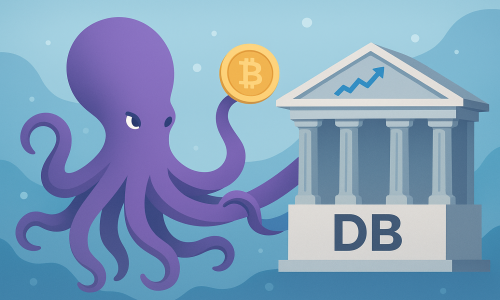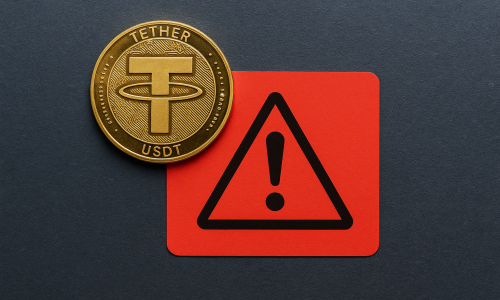Introduction
In a groundbreaking development for the global financial and cryptocurrency sectors, reports reveal that the Trump administration plans to establish an ‘America-First’ crypto reserve. The initiative is designed to prioritize U.S.-based cryptocurrencies such as Solana (SOL) and XRP (Ripple) while reducing reliance on foreign assets. This strategic shift underscores a renewed focus on national sovereignty in the digital economy and aims to solidify the United States’ leadership in the blockchain space.
The Foundation Of The ‘America-First’ Crypto Reserve
The concept of a national crypto reserve has been under discussion among policymakers and blockchain advocates for several years. However, Trump’s apparent endorsement of this initiative represents a bold move toward making the U.S. a dominant force in cryptocurrency adoption and innovation. Unlike traditional reserves backed by physical assets like gold or fiat currencies, a crypto reserve leverages blockchain-based assets, providing greater transparency, efficiency, and accessibility.
Why Solana And XRP?
Solana and XRP have emerged as top contenders for inclusion in the reserve, thanks to their unique attributes:
Solana (SOL): Known for its lightning-fast transaction speeds and low fees, Solana is widely regarded as one of the most scalable blockchain platforms. Its ability to handle thousands of transactions per second makes it a preferred choice for large-scale applications, including national financial systems.
XRP (Ripple): Ripple’s primary use case lies in facilitating cross-border payments with unmatched efficiency. By leveraging XRP, the U.S. could enhance its global payment networks and reduce dependency on traditional financial intermediaries.
Both cryptocurrencies align with the administration’s vision of promoting American innovation while reducing reliance on foreign-controlled digital assets such as Bitcoin (largely mined in China).
Impact On The Crypto Ecosystem
The establishment of an ‘America-First’ crypto reserve could have profound implications for both the U.S. economy and the global cryptocurrency market.
Boosting U.S.-Based Cryptos
Prioritizing U.S.-based digital currencies would likely lead to increased demand and adoption of these assets. This, in turn, could result in higher valuations for coins like Solana and XRP, attracting more investors to the market. Additionally, the focus on American cryptocurrencies might encourage developers and startups to innovate within U.S. borders, fostering a robust blockchain ecosystem.
Challenging Bitcoin’s Dominance
Bitcoin has long been the dominant player in the cryptocurrency space, but its mining operations have raised concerns about centralization and environmental impact. By promoting Solana and XRP, the U.S. could present viable alternatives to Bitcoin, potentially reshaping the market dynamics and challenging Bitcoin’s hegemony.
Global Financial Influence
The ‘America-First’ crypto reserve could also serve as a tool for the U.S. to maintain its influence in global financial systems. As other nations explore central bank digital currencies (CBDCs), this reserve positions the U.S. as a leader in decentralized finance (DeFi), ensuring that it remains at the forefront of digital economic policies.
Potential Challenges And Criticisms
While the idea of a national crypto reserve is promising, it is not without challenges.
Regulatory Concerns
The regulatory landscape for cryptocurrencies in the U.S. remains fragmented and uncertain. Critics argue that creating a crypto reserve might require significant legislative changes and could face resistance from lawmakers concerned about decentralization or potential misuse of blockchain technology.
Market Volatility
Cryptocurrencies are inherently volatile, and their inclusion in a national reserve could expose the U.S. economy to significant risks. Ensuring stability and risk management will be critical for the success of this initiative.
International Backlash
Focusing exclusively on U.S.-based assets might provoke criticism from international allies and trading partners, especially if it is perceived as a move toward economic isolationism. Balancing national priorities with global cooperation will be essential.
Technological Innovations To Support The Reserve
Developing a secure and scalable infrastructure to manage the crypto reserve is a top priority. This includes:
Blockchain Security: Leveraging advanced cryptographic methods to protect the reserve from cyber threats.
Scalability Solutions: Ensuring the system can handle large transaction volumes without compromising speed or efficiency.
Smart Contracts: Utilizing smart contracts to automate reserve operations, reducing the need for manual intervention and enhancing transparency.
Economic Implications For The U.S.
The adoption of an ‘America-First’ crypto reserve has far-reaching economic implications.
Strengthening the Dollar
By integrating cryptocurrencies into its reserves, the U.S. can enhance the strength of the dollar in global markets. This hybrid reserve model could provide the dollar with greater resilience against economic fluctuations.
Job Creation
The focus on blockchain innovation is expected to create thousands of jobs in the tech sector, from blockchain developers to regulatory experts, contributing to economic growth.
Stimulating Investment
A national crypto reserve could attract institutional and retail investors, boosting the overall investment landscape in the U.S.
Global Comparisons: How Other Nations Are Adopting Cryptocurrencies?
Several nations have already embraced cryptocurrencies, either through CBDCs or by integrating digital assets into their financial systems.
China: The Digital Yuan is a state-controlled CBDC designed to reduce dependency on the U.S. dollar.
European Union: The EU is exploring a digital euro to enhance its financial autonomy.
El Salvador: The country’s adoption of Bitcoin as legal tender has positioned it as a pioneer in national cryptocurrency integration.
The U.S. initiative stands out by focusing on decentralized assets rather than state-issued currencies, reflecting a commitment to innovation and market-driven growth.
Conclusion
Trump’s plan for an ‘America-First’ crypto reserve is a transformative idea that could redefine the role of cryptocurrencies in national and global economies. By prioritizing U.S.-based assets like Solana and XRP, the initiative aims to strengthen American sovereignty in the digital age while fostering innovation and economic growth.
While challenges remain, the potential benefits far outweigh the risks, making this a pivotal moment for the U.S. and the cryptocurrency sector. If executed successfully, this initiative could serve as a model for other nations and cement the U.S.’s leadership in the blockchain revolution.



